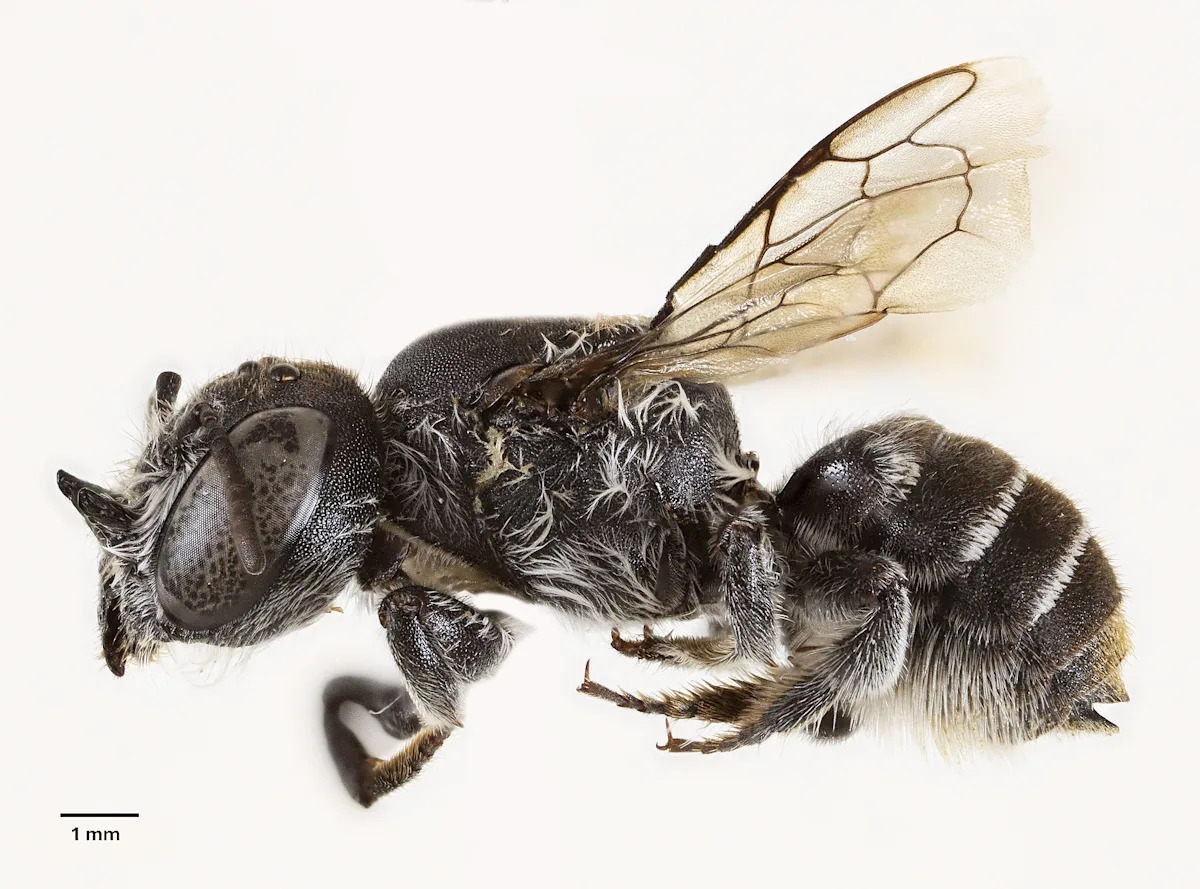A scientist was observing a critically endangered wildflower in Australia when she first spotted the bee, sprouting something that closer inspection revealed to be a pair of “demon-like horns.”
She later decided there was only one suitable name for the newly identified species: Megachile Lucifer.
“I was super excited to find it,” said Kit Prendergast, a native bee scientist who discovered the insect in 2019 as she conducted a survey in the Bremer Ranges in Western Australia’s Goldfields region. Prendergast is the lead author of a report on the species of native bee, which was published in the Journal of Hymenoptera Research on Monday.
Prendergast collected the bee using an entomological sweep net – a tool used to collect insects – during a survey to sample pollinators around populations of the rare Australian wildflower Marianthus aquilonaris. She later placed the bee under a microscope. Its horns each measured 0.9 millimeters in length and almost half as long as the head width in profile.
The report notes that only females have the “highly distinctive, prominent horns,” which project upward and outward. The function of the horns is “currently unclear,” Prendergast told The Post in an email Tuesday. They may be used to access flowers, compete for resources or to defend against competitors over nest sites, she added.
“The taxonomist who describes a new species gets to name it,” Prendergast said, adding that she consulted with the co-author of the report, Josh Campbell. “We decided that the devil like horns needed a devilish name.” Together, they settled on Lucifer.
Prendergast explained that species names are also in Latin, and that lucifer means “light bringer.” Her hope is that her description of the species illuminates a need to “better conserve, survey, and protect native bees and their native habitats.”
Prendergast admits that she also happens to be a fan of the Netflix show “Lucifer.”
In Australia, finding a species that has not been scientifically named or had a description published is “common,” she said, citing little funding into native bee taxonomy, and few taxonomists of native species. She estimates that there are around 500 undescribed native bee species.
What is more uncommon, however, is to find a species that has not been collected before, Prendergast said.
“There’s many undescribed species that have been collected, but are in museums waiting for a taxonomist with time, and adequate funding, to scientifically describe them,” she said. “So it was really cool to find it had never even been collected before.”
For Prendergast, who says she thinks “about native bees every day,” the discovery was significant. DNA testing concluded that the species didn’t match any known bees in existing databases.
There are around 2,000 native bee species in the country, according to CSIRO, Australia’s national scientific research organization.
“Further research observing females on flowers or at nests may help elucidate these proposed functions of the … horns,” Prendergast said. The location of the species’ nests are also not known at this time, but based on other species in the subgenus, they nest in small holes in wood created by wood-boring beetles, she added.
According to the report, the Bremer Ranges region – where the species was found – is at risk from a number of threats including gold mining and climate change. The region where the new bee species was collected is not under any conservation protection.
The report calls for the land to “formally protected … as conservation land that cannot be cleared.” Researchers say that more surveys need to be carried out to locate the new species of bee and if Megachile Lucifer is found, the area should not be cleared for mining access or for roads.
Prendergast said she hopes “people would do the right thing.”
While the new species of bee has not officially been listed on Australia’s threatened species list, it is likely range restricted and reliant on native vegetation, the research team believes. The flower it was spotted on is listed as “critically endangered” under the Western Australian Biodiversity Conservation Act, according to the report.
Surveys conducted in the region in 2022 and 2024 failed to collect the species, Prendergast said, adding that bees are facing a “crisis in conservation,” of which she is hoping to raise awareness.
Related Content
These Thanksgiving recipes are modern takes on retro favorites
Syrian president details plans to work with Americans he once fought
More flight cancellations after shutdown’s worst day for air travel

